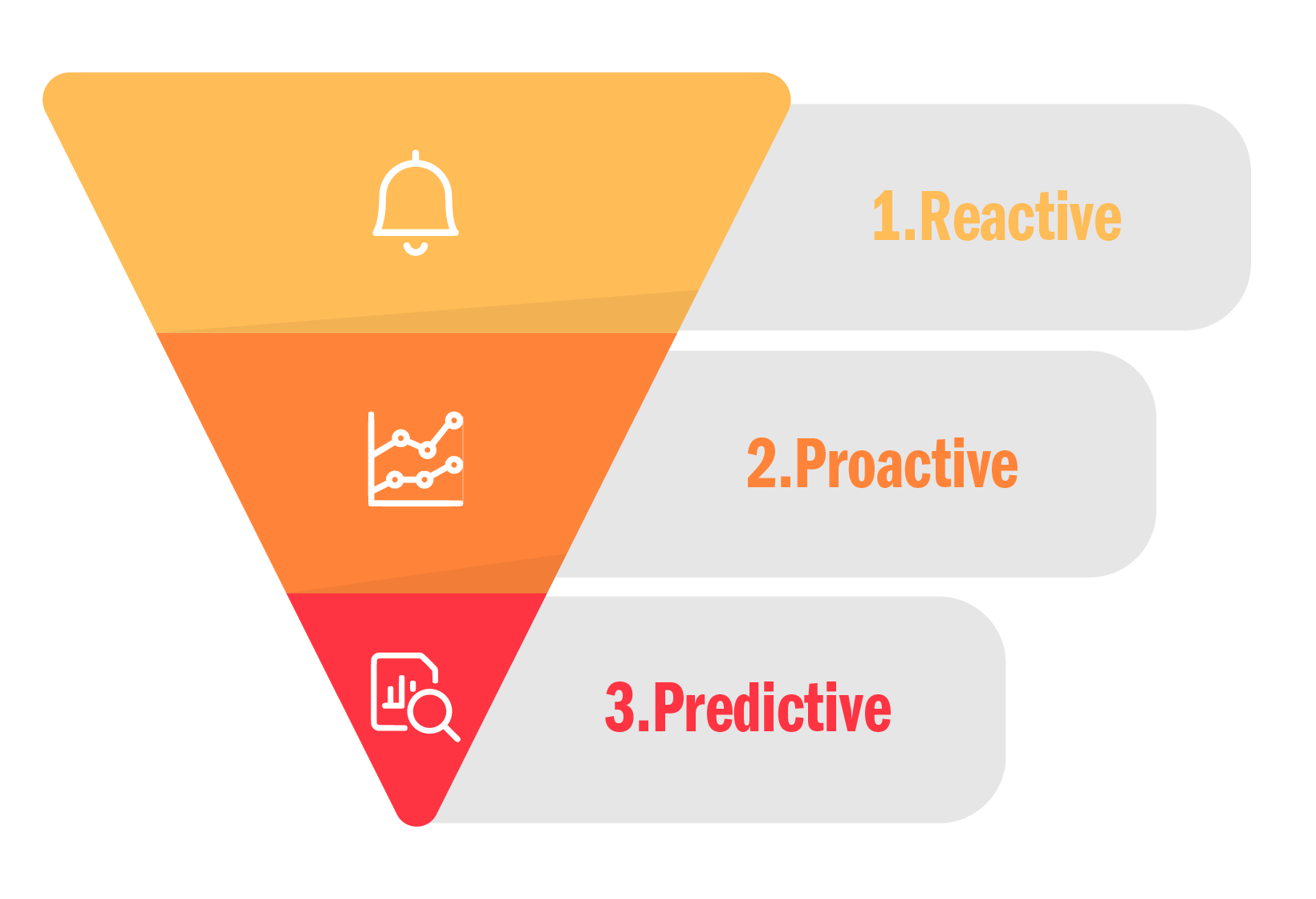
From generating expenses to building competitive advantage
Could field work mean something beyond just maintaining the equipment base? We’re approaching field work through three levels of maturity.
At the first level, field service is considered a reactive service, allowing the customer to request a maintenance person onsite if needed. The goal of the service is to rectify issues as swiftly as possible.
On the second level, customers are offered a proactive service, such as annual maintenance of devices or periodic inspection visits. The goal of the service is to extend the lifespan of the devices.
At the third level, customers are offered predictive service, such as the identification and rectification of potential problems before they even surface. At this stage, fieldwork leverages modern technology, including IoT (Internet of Things) and artificial intelligence, which allows for intervention at the first signs of trouble. The goal is to ensure uninterrupted operation for the client and to minimize production losses resulting from these issues.
Offer first class service
to your customers
If you’re looking to turn field work into a source of revenue, offer your clients top-notch service, and ensure the uninterrupted operation of your customers, you need modern tools.
We help you advance towards the third stage of maturity, where you can deliver significant added value to your customers with predictive service. This way you can ensure that the customer’s devices are always operational. It’s a promise many are willing to pay for.
This is why believe that field work could be significant source of revenue instead of being just an expensive necessity.
Salesforce Field Service
Field Service is Salesforce’s solution for field work needs. Field Service provides modern and versatile tools for managing work orders, schedules, and mobile workforce.
The most typical challenges of field work and field service
Lots of unnecessary visits to customer sites and a bunch of missed opportunities due to insufficient information.
The aim of field work must be to resolve issues as swiftly and effortlessly as possible. This is achievable when field personnel have access to all necessary information. This information can be provided through Salesforce. Moreover, customer visits also present an opportunity to identify the customer’s needs and recognize opportunities for additional sales. At the same time, sales can be kept informed about all the maintenance activities performed for the customer.
It is difficult to manage and optimize field work, because are too many moving parts.
Managing fieldwork is sometimes like playing chess, where one must know how to move the pieces with foresight. The task of management becomes significantly easier when planning routes, work sequences, and prioritizing tasks can be supported by efficient tools and automation.
Unexpected stoppages due to equipment failures cost a lot of money for customers.
The same principles that apply to customer service also apply to field work. By the time a customer contacts you because a device has broken down, you’re already too late. The goal of proactive and predictive field work is to spot potential problems before they actually cause any harm. Usually devices don’t just break down on a suddenly. IoT sensors for example are capable of detecting warning signs well in advance.
Frequently asked questions
In Salesforce implementations, the starting point often revolves around the needs of sales, which is why Sales Cloud is typically the first cloud solution to be implemented. Nothing however stops you from kicking things off with field service.
Instead of meticulously refining individual processes, it’s important to start with the objectives. What are we aiming to achieve with field work? Is the goal to enhance customer satisfaction or are we seeking to boost sales? Once the goal is clarified, we can start developing the entirety. The most crucial aspect is to make field work more transparent so that the management can comprehend how each element influences the outcome.
Contact us
Do you want to gain competitive edge by standing out from the competition and providing your customers with superior service?